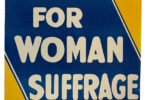
The origin of St. Valentine’s Day is painted with much folklore and legend, starting over 1750 years ago when at least two Saint Valentines were beheaded: Valentine of Rome and Valentine of Terni, a priest and a bishop both associated with secret weddings and martyrdom.
The most romantic and famous of these stories involves Valentine of Rome, who is said to have restored the sight of a jailer’s blind daughter, then fell in love with her, writing her from his cell before his death a letter he signed “From your Valentine.” The facts about these saints, bearing the common Roman name of Valentine, are vague, with no timely or decisively written history.
At the end of the 5th century, Pope Gelasius declared February 14th Saint Valentine’s Day in honor of the martyred Saint(s) and maybe to put a stop to the Roman pagan holiday Lupercalia, celebrated on February 15th. The Roman holiday centered around fertility and involved nearly naked men slapping women with blood-dipped goatskins.
But nothing was particularly romantic about Saint Valentine’s Day until English poet Geoffrey Chaucer tied it to mating. In his 14th-century poem “Parlement of Foules,” Chaucer wrote: “For this was on seynt Volantynys day. Whan euery bryd comyth there to chese his make.” After that, European nobility took the bird-mating season as a time to send love notes.
In Hamlet, written around 1599–1601, Shakespeare mentions Saint Valentine’s Day as a symbol for lovers, Ophelia citing the folklore tale that the first girl seen by a man on Valentine’s Day would be his true love:
Tomorrow is Saint Valentine’s day,
All in the morning betime,
And I a maid at your window,
To be your Valentine.
Valentine’s Day became closely associated with poetry thanks to Chaucer and Shakespeare. In 1797, a British publisher released The Young Man’s Valentine Writer to help lovers compose their prose. Soon, those who could afford to, sent printed cards, flowers, and chocolates to their loves. While the origins of Valentine’s Day are rooted in the UK, customs sprang up worldwide.
During the Victorian era (1820-1914), reduced postage rates, the invention of postage stamps, and the ability of printers to make “mechanical valentines” significantly increased the rate at which lovers exchanged cards.
The British posted 400,000 Valentines in 1841; by 1871, that number had grown to 1.2 million. Although some cards were purchased pre-made, others were built with care from lace, ribbon, and paper, illustrations and pictures, bits of mirror, hair, seashells, and glass. Even Queen Victoria supposedly sent Valentine’s to her servant John Brown (after the death of her husband Prince Albert).
In America, the holiday was slower to catch on. Then, in 1849, Esther Howland, a 19-year-old graduate of Mount Holyoke College, got an idea after receiving an elaborate Valentine.
American Valentines were cheap, the fancy ones expensively imported from overseas. Esther asked her father, owner of a large bookstore and stationery store, to purchase $200 of supplies from New York, Germany, and England to produce a dozen Valentine designs. She asked her brother to collect interest in the designs while away on a business trip, hoping to make back the $200 spent. Instead, she received over $5000 in orders. Esther quickly recruited her friends and made an assembly line in her home to begin production.
By 1864, ‘outposts’ opened in Ohio and Nevada, selling her New England Valentine’s Company cards, nearly monopolizing the American Valentine market. Today, Howland’s Valentines are a sought-after collector’s item, and Howland is known not only as the “Mother of the American Valentine” but also as New England’s first career woman.
On February 4th, 1867, The New York Times wrote that in 1862, post offices in New York City had accepted 21,260 Valentines for delivery. 1863 showed a slight increase, but the number fell to 15,924 the year after. However, in 1865, perhaps with bitter memories of the war starting to fade, New Yorkers mailed more than 66,000 Valentines and more than 86,000 the following year.
Hallmark first began offering Valentine’s Cards in 1913. Today, Hallmark estimates an estimated 145 million Valentines are exchanged every year.
While Valentine’s Day is as popular as ever, celebrating has moved away from cards and often focuses on trips or nights out. Yet for the Bibliophile in your life, nothing could touch their heart more than a carefully selected book.
Resources
The ‘real’ St. Valentine was no patron of love
Who Was the Real St. Valentine? The Many Myths Behind the Inspiration for Valentine’s Day
Valentine’s Day in the Victorian Era
History of St. Valentine’s Day in the 1800s
History of Valentine’s Day
Valentine’s Day
Met Museum – Esther Howland’s Collection
Amy C. Manikowski is a writer living in Asheville, NC.







